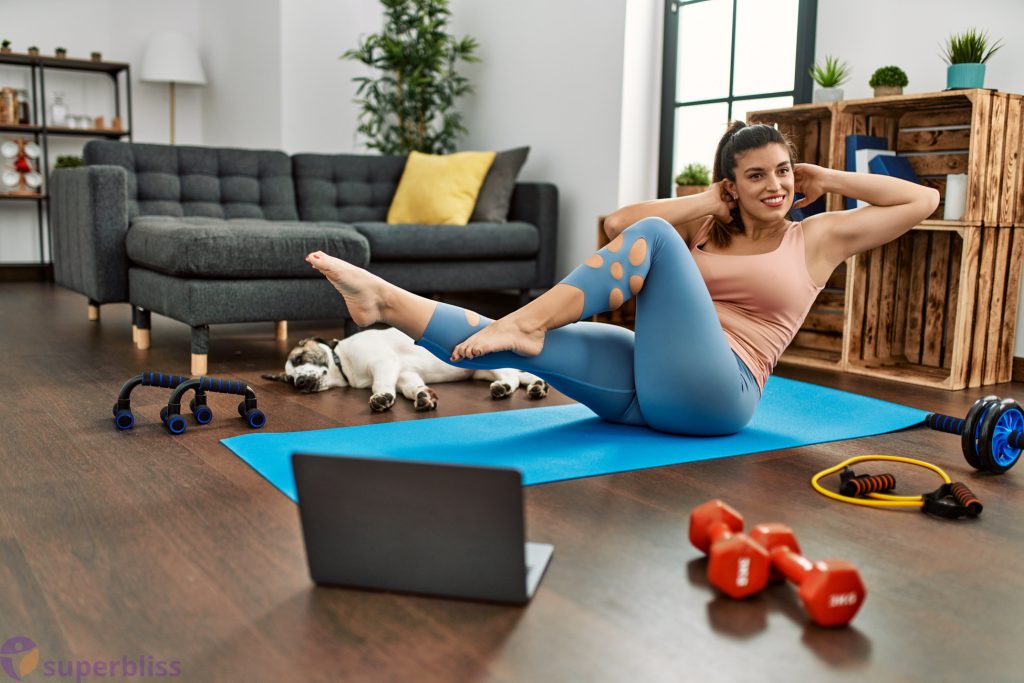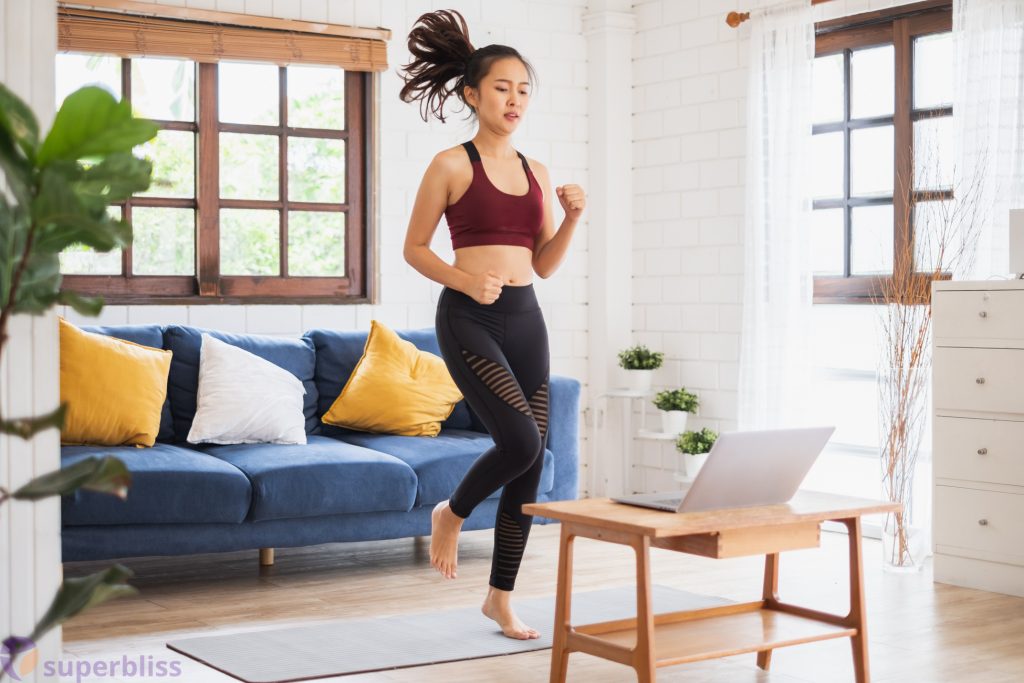Table of Contents
In today’s fast-paced world, finding time to hit the gym can be challenging. However, with the rise of home fitness, getting in shape has become more accessible than ever. Whether you’re a beginner or an experienced fitness enthusiast, setting up a home gym can provide the convenience and flexibility needed to achieve your fitness goals.
1 Setting Up Your Home Gym
Choosing the Right Space
The first step in creating a home gym is finding the right space. Ideally, you want an area that is well-ventilated, spacious enough to move around comfortably, and free from distractions. This could be a spare room, garage, or even a corner of your living room.
Essential Equipment for Beginners
You don’t need a room full of expensive equipment to get started. For beginners, focus on investing in versatile pieces such as dumbbells, resistance bands, a yoga mat, and a stability ball. These items can provide a full-body workout without taking up too much space or breaking the bank.
2 Planning Your Workout Routine
Understanding Your Goals
Before diving into a workout routine, take some time to define your fitness goals. Whether you’re looking to lose weight, build muscle, or improve your overall health, having clear objectives will help guide your training program.
Structuring Your Workouts
A well-rounded workout routine should include a mix of cardiovascular exercises, strength training, flexibility work, and rest days. Start with a basic plan that incorporates these elements and gradually increase the intensity and duration as you progress.

3 Basic Exercises for Beginners
Cardiovascular Exercises
Cardiovascular exercises, such as brisk walking, jogging, cycling, or jumping rope, are essential for improving heart health and burning calories. Aim for at least 30 minutes of moderate-intensity cardio most days of the week.
Strength Training Exercises
Strength training helps build muscle, increase metabolism, and improve overall strength and endurance. Start with bodyweight exercises like squats, lunges, push-ups, and planks, then gradually add resistance as you get stronger.
4 Incorporating Flexibility and Mobility Work
Don’t forget to include flexibility and mobility exercises in your routine to improve range of motion, prevent injury, and enhance recovery. Yoga, stretching, and foam rolling are great options for improving flexibility and reducing muscle stiffness.
5 Staying Motivated and Consistent
Setting Realistic Goals
Set achievable goals and celebrate your progress along the way. Whether it’s completing a certain number of workouts per week or hitting a new personal best, small victories will keep you motivated and moving forward.
Finding Accountability Partners
Enlist the support of friends, family, or online communities to help keep you accountable. Having a workout buddy or joining a virtual fitness group can provide encouragement, accountability, and a sense of camaraderie.
6 Progress Tracking and Adjustments
Keeping a Workout Journal
Keep track of your workouts, progress, and setbacks in a journal or fitness app. This will help you identify patterns, track improvements, and make necessary adjustments to your routine.
Adapting Your Routine as You Improve
As you become fitter and stronger, don’t be afraid to challenge yourself with new exercises, heavier weights, or more intense workouts. Listen to your body, be open to change, and adjust your routine accordingly to continue making progress.
7 Avoiding Common Mistakes
Over training
Avoid over-training by giving your body adequate time to rest and recover between workouts. Overtraining can lead to fatigue, burnout, and increased risk of injury, so prioritize rest days and listen to your body’s signals.
Poor Form
Focus on maintaining proper form and technique during exercises to prevent injuries and maximize results. If you’re unsure about how to perform a certain exercise, seek guidance from a qualified fitness professional or use online resources to learn correct form.
8 Recovering and Resting Properly
In addition to rest days, prioritize recovery strategies such as adequate sleep, hydration, and nutrition. Proper rest and recovery are essential for muscle repair, growth, and overall well-being.
9 Nutrition Tips for Home Fitness Enthusiasts
Fuel your workouts and support your fitness goals with a balanced diet rich in lean proteins, healthy fats, complex carbohydrates, fruits, and vegetables. Stay hydrated, avoid processed foods, and listen to your body’s hunger and fullness cues.

10 Benefits of Home Fitness
Home fitness offers numerous benefits, including convenience, flexibility, cost savings, privacy, and customization. With the right setup and mindset, you can achieve your fitness goals from the comfort of your own home.
11 Overcoming Challenges
While home fitness has its advantages, it also comes with its own set of challenges, such as lack of motivation, distractions, and limited equipment. However, with dedication, creativity, and perseverance, you can overcome these obstacles and create a successful home workout routine.
12 FAQs About Home Fitness for Beginners
- Q: Can I get in shape with just body weight exercises?
- A: Yes, body weight exercises can be highly effective for building strength, endurance, and flexibility, especially for beginners.
- Q: How often should I work out as a beginner?
- A: Aim for at least 3-4 workouts per week, with a mix of cardiovascular, strength training, and flexibility exercises.
- Q: Do I need to buy expensive equipment for a home gym?
- A: No, you can achieve a great workout with minimal equipment, such as dumbbells, resistance bands, and a yoga mat.
- Q: How long should my workouts be?
- A: Aim for 30-60 minutes per session, depending on your fitness level and goals.
- Q: How can I stay motivated to work out at home?
- A: Set realistic goals, find accountability partners, vary your workouts, and celebrate your progress to stay motivated and consistent.
Conclusion
Embarking on a home fitness journey as a beginner can be both exciting and challenging. By setting realistic goals, planning your workouts, staying motivated, and prioritizing recovery, you can build a sustainable fitness routine that brings you closer to your health and wellness goals.
Note: The above content is for informational purposes only and should not replace professional medical advice. Always consult with a qualified healthcare provider before making any dietary or lifestyle changes.


 Fitness
Fitness




 Weight Loss
Weight Loss




 Health
Health


 Popular Items
Popular Items Health Recipes
Health Recipes




 Health Tools
Health Tools Media Feeds
Media Feeds



 Discover:
Discover: 












Discussion about this post